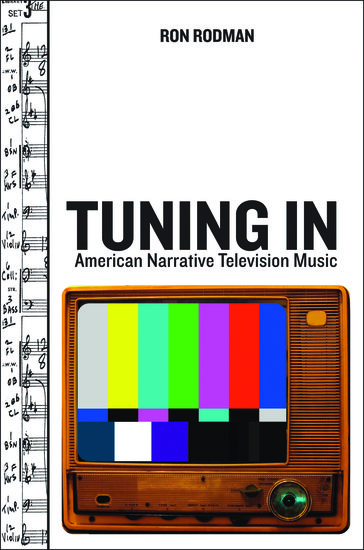The New Year is a time of looking forward to the future and back to the past. Looking back, last year witnessed the death of Dave Brubeck, one of the all time great jazz musicians. Brubeck became famous through his live performances and his recordings, especially the seminal Time Out album released in 1958. But he also became famous through his many appearances on American and international television, beginning with The Colgate Comedy Hour in 1955, and appearing on variety shows such as The Steve Allen Plymouth Show (1958), The Timex All-Star Jazz Show (1957), and The Ed Sullivan Show (1955, 1960, 1962). As his fame grew, Brubeck also became the subject of several TV documentaries, including prestigious programs like The Twentieth Century (1961) and The Bell Telephone Hour (1968). He was also an honored guest in the few exclusively jazz programs that aired in the 1960s. He appeared on Jazz 625 in 1964 and made several appearances on Jazz Casual, an occasional series that ran on the National Educational Network from 1961-68.
Here’s the Brubeck Quartet performing for a broadcast of Jazz Casual in 1961.
Brubeck made many more TV appearances throughout the world in the 1960s and 1970s, many of which can be seen on YouTube.
As important as Brubeck’s TV appearances were, perhaps no one furthered the cause of jazz on television more than Billy Taylor, who also died recently in 2010. After graduating college in 1942, Taylor got his professional start with Ben Webster’s Quartet on New York’s famed 52nd Street. He then served as the house pianist at the legendary club Birdland, where he performed with such celebrated masters as Charlie Parker, Dizzy Gillespie, and Miles Davis. He went on to receive a masters and doctor’s degree in music education at the University of Massachusetts-Amherst, and served as Duke Ellington Fellow at Yale. He divided his career as performer, writer, jazz advocate, and educator for the remainder of his life.
Taylor’s contributions to television music were manifold. He was the music director and band leader for The David Frost Show from 1969-72, becoming the first African American musician to hold that position on a TV talk show. He served as “Jazz and Modern Music Correspondent” for CBS News Sunday Morning from 1981-2002. He also was a contributor to many jazz documentaries, notably for Louis Armstrong (1971) and Duke Ellington (1981, 2000).
Taylor made his TV debut on the Steve Allen’s Tonight! show in 1956. Next, he appeared on Jazz Party in 1958. That year proved pivotal, as Taylor was asked to be music director for a new TV series, The Subject is Jazz, produced by NBC.
Before his death, Dr. Taylor was interviewed for an upcoming book of his memoirs written by Teresa Reed, The Jazz Life of Dr. Billy Taylor (Indiana University Press). Taylor had this to say about the program:
“A second opportunity in 1958 came by way of Marshall Stearns. By that time, his deep interest in jazz had turned to television, and in collaboration with Leonard Feather, he came up with the idea to do a series of thirteen shows as part of a program called The Subject is Jazz. Although jazz had been on radio for decades, The Subject is Jazz would be the very first program of its type to come to television. Stearns and Feather were both writers, however, and neither knew a thing about the practical aspects of musical direction or doing a television show. So it was for this purpose that they hired me. Having experienced rejection from MENC, it was crucial to me that The Subject is Jazz develop into a high-quality, educational show. The Subject is Jazz was distributed through NBC network facilities to educational TV stations. Although a variety of different musicians performed on the show, my basic combo included Osie Johnson on drums, Eddie Safranski on bass, Mundell Lowe on guitar, Tony Scott on clarinet, Jimmy Cleveland on trombone, and Carl (later known as “Doc”) Severinsen on trumpet.
“The show featured some great music and stimulating conversations with people like Duke Ellington, Aaron Copland, and Leonard Bernstein, all of whom were serious connoisseurs of jazz. But a major flaw was the show’s dry, stoic, and overly academic presentation. There were lots of people who knew and loved the music, people who would have made excellent commentators for the show… Rather than get some known radio personality, the producer hired Gilbert Seldes, a Harvard-trained cultural critic who read to the television audience from his stack of handheld notes. I knew that the audience for The Subject is Jazz was vastly different from the audience I typically encountered while I was performing in clubs. Gilbert Seldes was a conservative, grandfatherly type in his mid-sixties who sported a professorial bowtie and spoke in a sort of scholarly monotone, using carefully measured language as one does while delivering a lecture. He was an intellectual speaking to a Saturday-afternoon television audience of intellectuals who wanted to understand the music with their minds as much as they enjoyed it with their ears and hearts. Working in this context, it was my job to combine clear, articulate answers to Seldes’s questions with musical demonstrations of whatever I was explaining.
“By today’s more sophisticated, high-tech standards, The Subject is Jazz may seem like a very primitive and ‘square’ attempt at using mass media to educate the public about the music. Yet, in some ways, the show was quite ahead of its time. During the thirteen-week run of The Subject is Jazz I also had an opportunity to perform some of my own compositions… The last episode featured a composition that was my tribute to Charlie Parker, titled “Early Bird.”” (Teresa Reed, The Jazz Life of Dr. Billy Taylor, p.137-38)
Here is a video of that last episode:



[…] this blog last month, I wrote about Dr. Billy Taylor and his pioneering work on television as an advocate for jazz. To celebrate Black History Month, it is appropriate to […]